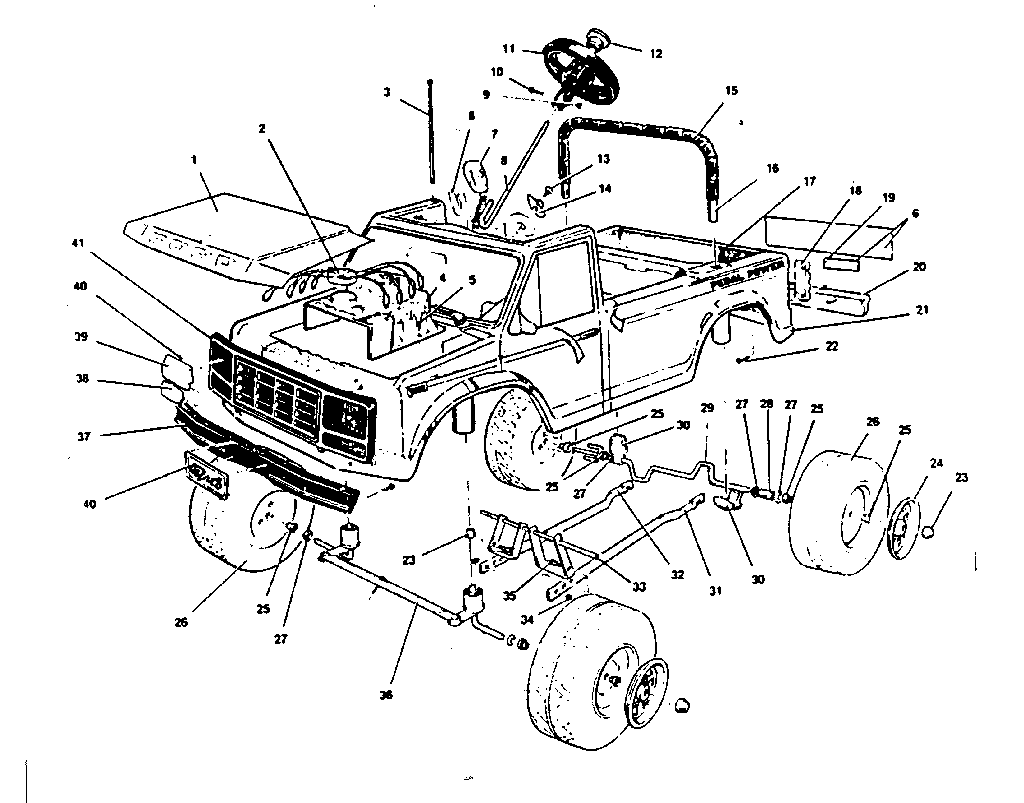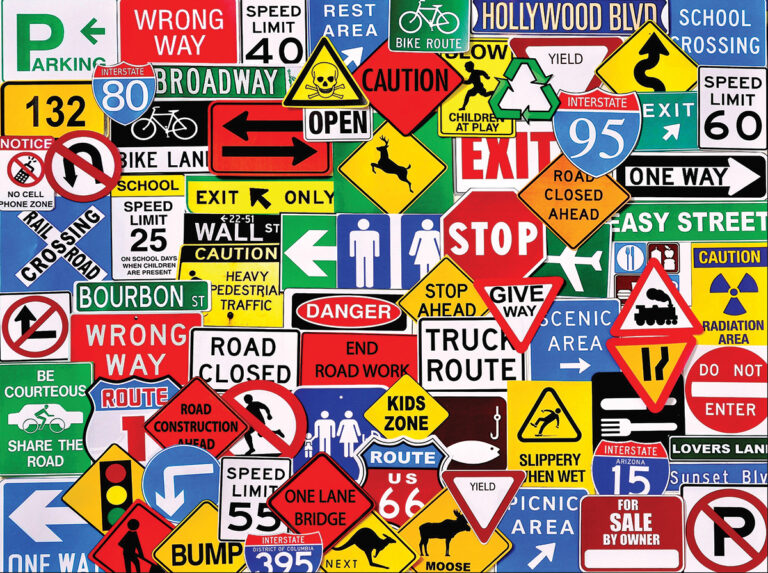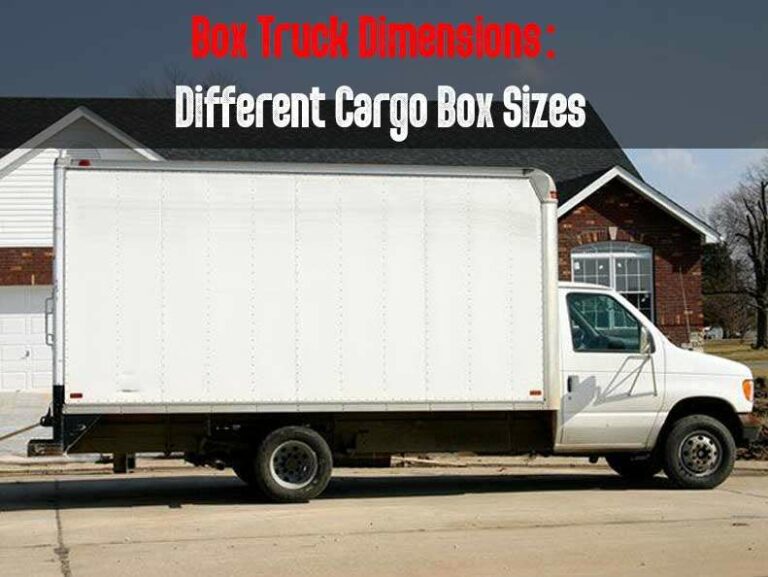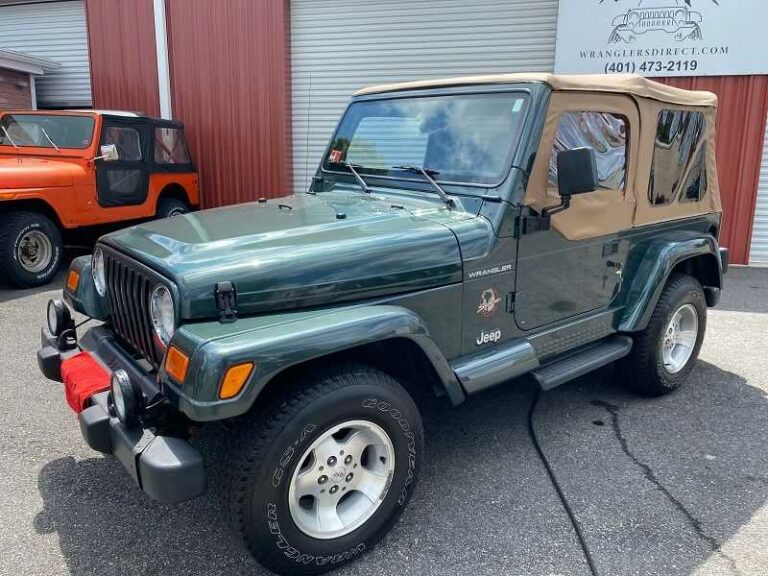Pickup Truck Part Names: Your Comprehensive Guide to Understanding Your Rig
Pickup Truck Part Names: Your Comprehensive Guide to Understanding Your Rig cars.truckstrend.com
The rumble of a powerful engine, the versatility of a spacious bed, and the rugged capability to tackle any terrain – these are the hallmarks of the pickup truck. More than just a vehicle, a pickup is often a workhorse, an adventure companion, and an extension of its owner’s lifestyle. But beneath the polished paint and sturdy frame lies a complex network of interconnected components, each with its own vital role. Understanding the names and functions of these parts isn’t just for mechanics; it empowers every truck owner to make informed decisions about maintenance, repairs, and customization.
This comprehensive guide, "Pickup Truck Part Names," aims to demystify the anatomy of your beloved truck. Whether you’re a seasoned enthusiast looking to deepen your knowledge, a new owner eager to learn the ropes, or simply curious about what makes these machines tick, this article will serve as your essential roadmap. We’ll navigate through the exterior, delve into the interior, explore the intricate workings under the hood, and uncover the crucial components that deliver power and ensure a smooth ride. By the end, you’ll not only know the names but also appreciate the sophisticated engineering that defines the modern pickup truck.
Pickup Truck Part Names: Your Comprehensive Guide to Understanding Your Rig
The Exterior: Body, Bed, and Beyond
The exterior of a pickup truck is its first impression, defining its style, utility, and protection. These parts are often the most visible and susceptible to wear, tear, and damage.
- Cab: This is the enclosed passenger compartment of the truck, available in various configurations like Regular Cab (two doors, single row of seating), Extended Cab (smaller rear doors, limited rear seating), and Crew Cab (four full-size doors, spacious rear seating).
- Bed: The open cargo area at the rear of the truck, designed for hauling goods. It can vary in length (short bed, standard bed, long bed) and may feature integrated storage solutions.
- Tailgate: The hinged panel at the rear of the bed that opens and closes to allow access to the cargo area. Modern tailgates often include features like dampened opening, power assist, or even integrated steps.
- Bed Liner: A protective layer (usually plastic or spray-on material) applied to the inside of the bed to prevent scratches, dents, and rust.
- Tonneau Cover: A cover that extends over the truck bed to protect cargo from weather and theft. Available in various styles: roll-up, tri-fold, retractable, or hard-shell.
- Bed Rails: Protective rails mounted along the top edges of the bed, often used for tying down cargo or mounting accessories.

- Fenders: The body panels that arch over the wheels, protecting them and preventing debris from being thrown up by the tires.
- Hood: The hinged cover over the engine compartment, providing access for maintenance and repairs.
- Grille: The protective mesh or slat-covered opening at the front of the vehicle, allowing airflow to the radiator and engine while also serving as a key styling element.
- Bumper (Front/Rear): Structural bars at the front and rear designed to absorb impact in a collision and protect the vehicle’s frame. Rear bumpers often integrate a hitch receiver.
- Headlights: Front-mounted lights that illuminate the road ahead, featuring high and low beams, and often integrated daytime running lights (DRLs) and turn signals.
- Taillights: Rear-mounted lights that indicate the vehicle’s presence, brake application, and turn signals.
- Side Mirrors: Mounted on the doors, providing rearward visibility. They can be manually adjustable, power-adjustable, heated, power-folding, or feature integrated turn signals and blind-spot monitors.
- Wheels: The rotating components (rims) to which tires are mounted, connecting the vehicle to the ground. Made from steel or various alloys.
- Tires: The rubber components mounted on the wheels, providing traction, cushioning, and supporting the vehicle’s weight. Various types exist for different conditions (all-season, off-road, mud-terrain, winter).
![]()

Practical Advice for Exterior Parts: Regularly wash and wax your truck to protect the paint. Inspect bumpers and lights for damage, especially after off-road excursions. Check tire pressure monthly and rotate tires regularly to ensure even wear.
The Interior: Comfort, Control, and Connectivity
The interior of a pickup truck is where the driver and passengers spend their time, and it’s designed for a blend of rugged utility and modern comfort.
- Dashboard (Dash): The panel located in front of the driver and passenger, housing the instrument cluster, infotainment system, HVAC controls, and various switches.
- Steering Wheel: The primary control for directing the vehicle, often equipped with buttons for audio, cruise control, and phone calls.
- Instrument Cluster: Located behind the steering wheel, displaying vital information such as speed, RPM, fuel level, engine temperature, and warning lights.
- Seats: Designed for comfort and support, available in various materials (cloth, vinyl, leather) and configurations (bench seat, bucket seats). Many offer power adjustment, heating, and ventilation.
- Center Console: The storage and control area located between the front seats, often housing cupholders, storage compartments, USB ports, and the gear shifter.
- Door Panels: The interior trim on the doors, housing window switches, door handles, and speakers.
- HVAC (Heating, Ventilation, Air Conditioning) Controls: Buttons and dials for managing cabin temperature, fan speed, and airflow direction.
- Infotainment System: The central screen (often touchscreen) providing access to radio, navigation, Bluetooth connectivity, Apple CarPlay/Android Auto, and vehicle settings.
- Pedals: Foot-operated controls for acceleration (accelerator/gas pedal), braking (brake pedal), and clutch (manual transmission only).
Important Considerations for Interior Parts: Keep the interior clean to prevent wear and maintain resale value. Protect seats from sun damage and spills. Understand your dashboard warning lights – they are crucial indicators of potential problems.
Under the Hood: Engine and Related Systems
The heart of any pickup truck is its engine, a complex machine responsible for generating the power to move the vehicle. Surrounding it are numerous vital systems that ensure its proper operation.
- Engine Block: The main structural component of the engine, containing the cylinders where combustion occurs.
- Cylinder Head: Sits atop the engine block, housing the valves and camshafts, and forming the combustion chamber with the pistons.
- Pistons: Cylindrical components that move up and down within the cylinders, converting the force of combustion into mechanical energy.
- Crankshaft: A rotating shaft connected to the pistons, converting their reciprocating motion into rotational motion to drive the wheels.
- Camshaft: Controls the opening and closing of the engine’s intake and exhaust valves.
- Spark Plugs: Ignite the air-fuel mixture in gasoline engines.
- Fuel Injectors: Spray fuel into the engine’s cylinders or intake manifold.
- Air Filter: Filters dust and debris from the air entering the engine, protecting internal components.
- Radiator: Part of the cooling system, dissipating heat from the engine coolant.
- Alternator: Generates electricity to power the vehicle’s electrical systems and recharge the battery.
- Battery: Stores electrical energy to start the engine and power accessories when the engine is off.
- Starter Motor: An electric motor that cranks the engine to start it.
- Belts (Serpentine Belt, Timing Belt/Chain):
- Serpentine Belt: Drives multiple accessories like the alternator, power steering pump, and A/C compressor.
- Timing Belt/Chain: Synchronizes the rotation of the crankshaft and camshafts.
- Hoses: Transport fluids like coolant, fuel, and power steering fluid throughout the engine bay.
- Exhaust Manifold: Collects exhaust gases from the cylinders and directs them to the exhaust system.
- Catalytic Converter: Reduces harmful emissions from the exhaust gases.
Tips for Engine Maintenance: Adhere to regular oil changes, check fluid levels (oil, coolant, brake fluid) frequently, and replace air and fuel filters as recommended. Pay attention to any unusual noises or smells coming from the engine.
The Drivetrain: Power to the Wheels
The drivetrain is the system that transmits power from the engine to the wheels, allowing the truck to move. Its components vary depending on whether the truck is two-wheel drive (2WD), four-wheel drive (4WD), or all-wheel drive (AWD).
- Transmission: Changes the gear ratio between the engine and the wheels, allowing the engine to operate efficiently at various speeds. Can be manual (requiring a clutch) or automatic.
- Clutch: (Manual transmission only) Disengages the engine from the transmission, allowing for gear changes.
- Driveshaft (Propeller Shaft): A rotating shaft that transmits power from the transmission to the differential(s).
- Differential: A set of gears that allows the wheels on the same axle to rotate at different speeds, crucial for turning corners. Trucks can have a front, rear, or both differentials.
- Axles: Shafts that connect the differential to the wheels, transmitting power.
- Transfer Case: (4WD/AWD trucks) Allows the driver to switch between 2WD and 4WD modes, distributing power to both front and rear axles. It often includes low-range gearing for off-road situations.
- CV (Constant Velocity) Joints: (Found on front axles of 4WD/AWD and independent rear suspensions) Allow the axle to flex and articulate while transmitting power smoothly.
Challenges and Solutions for Drivetrain: Regular fluid changes for the transmission, differentials, and transfer case are crucial. Listen for grinding noises or difficulty shifting, which could indicate transmission issues. Ensure proper engagement of 4WD systems when off-roading.
Suspension, Steering, and Chassis: Ride, Handling, and Safety
These systems work in conjunction to provide a comfortable ride, precise steering, and safe handling, especially important for the often heavy-duty nature of pickup trucks.
- Frame (Chassis): The main structural backbone of the truck, to which all other components are attached. Most pickups use a robust ladder frame construction.
- Springs (Coil Springs/Leaf Springs): Support the vehicle’s weight and absorb road imperfections. Coil springs are common in the front, while leaf springs are traditionally used in the rear for heavy hauling.
- Shock Absorbers/Struts: Dampen spring oscillations, preventing excessive bouncing and maintaining tire contact with the road. Struts combine a spring and shock absorber into one unit.
- Control Arms: Link the wheel hub to the vehicle’s frame, allowing for vertical movement while maintaining alignment.
- Ball Joints: Pivoting connections that allow the suspension and steering components to move freely.
- Tie Rods: Connect the steering rack/box to the steering knuckles, allowing the wheels to turn.
- Steering Rack/Box: Converts the rotational motion of the steering wheel into the linear motion needed to turn the wheels.
- Brake System: Crucial for slowing and stopping the vehicle.
- Brake Rotors (Discs): Rotating metal discs attached to the wheels.
- Brake Calipers: Clamp brake pads onto the rotors to create friction and slow the wheel.
- Brake Pads: Friction material that presses against the rotors.
- Master Cylinder: Converts pedal pressure into hydraulic pressure to activate the brakes.
- Brake Lines: Hoses and tubes that transmit hydraulic pressure to the calipers.
- Anti-lock Braking System (ABS): Prevents wheels from locking up during hard braking, allowing the driver to maintain steering control.
Practical Advice for Suspension/Steering/Brakes: Have your alignment checked regularly. Replace worn shock absorbers for improved ride quality and safety. Promptly address any squealing, grinding, or soft brake pedal feel. These are safety-critical systems.
Price Table: Estimated Costs for Common Pickup Truck Parts
Understanding the names of parts is one thing; knowing their potential replacement costs is another. Below is a table of common pickup truck parts and their estimated replacement costs. Please note that prices vary significantly based on truck make/model/year, part quality (OEM vs. aftermarket), labor rates, and geographical location. These are for general guidance only.
| Part Name | Description | Estimated Part Cost Range (USD) | Estimated Labor Cost Range (USD) | Total Estimated Cost Range (USD) |
|---|---|---|---|---|
| Exterior | ||||
| Headlight Assembly | Complete unit (e.g., LED/Halogen) | $150 – $800+ (each) | $50 – $150 | $200 – $950+ |
| Tailgate | Replacement tailgate (unpainted) | $300 – $1,500+ | $100 – $300 (plus paint) | $400 – $1,800+ |
| Front Bumper | Bumper assembly (unpainted) | $200 – $1,000+ | $100 – $400 (plus paint) | $300 – $1,400+ |
| Side Mirror | Power/Heated/Signal Mirror | $100 – $500+ (each) | $50 – $150 | $150 – $650+ |
| Under the Hood | ||||
| Battery | Standard 12V automotive battery | $100 – $250 | $0 – $50 | $100 – $300 |
| Alternator | Rebuilt/New unit | $150 – $400 | $100 – $300 | $250 – $700 |
| Starter Motor | Rebuilt/New unit | $100 – $350 | $100 – $250 | $200 – $600 |
| Radiator | Engine cooling radiator | $150 – $500 | $200 – $500 | $350 – $1,000 |
| Water Pump | Engine cooling system pump | $50 – $200 | $200 – $500 | $250 – $700 |
| Drivetrain | ||||
| CV Axle (Front) | Half-shaft with CV joints (each) | $100 – $300 | $150 – $400 | $250 – $700 |
| Driveshaft | Depending on length/type | $200 – $800+ | $100 – $250 | $300 – $1,050+ |
| Suspension/Brakes | ||||
| Front Brake Pads/Rotors | Per axle (set) | $100 – $400 | $100 – $250 | $200 – $650 |
| Shock Absorber (each) | Standard replacement shock | $50 – $200 | $50 – $150 | $100 – $350 |
| Ball Joint (each) | Upper or Lower | $40 – $150 | $100 – $300 | $140 – $450 |
Frequently Asked Questions (FAQ) About Pickup Truck Part Names
Q1: Why is it important to know pickup truck part names?
A1: Knowing part names empowers you to accurately describe issues to mechanics, understand repair estimates, research parts for DIY projects, and make informed decisions when buying accessories or replacement parts. It enhances your overall understanding and control over your vehicle.
Q2: Are part names standardized across all truck manufacturers (Ford, Chevy, Ram, Toyota, etc.)?
A2: For major components (e.g., engine, transmission, axle, radiator), the names are generally standard. However, specific sub-components, proprietary technologies, or unique styling elements might have manufacturer-specific names or terms. Aftermarket parts often use generic names.
Q3: What’s the difference between OEM and Aftermarket parts?
A3: OEM (Original Equipment Manufacturer) parts are made by the original company that supplied the parts to the truck manufacturer. They are identical to the parts your truck came with. Aftermarket parts are made by companies other than the original supplier. They can be cheaper, offer performance upgrades, or simply be alternatives, but quality can vary.
Q4: How can I find the specific part name for my truck’s year, make, and model?
A4: Your truck’s owner’s manual is a great starting point for common components. For more specific parts, you can use online parts diagrams provided by dealerships, aftermarket parts websites (like RockAuto, AutoZone, etc.), or consult a professional mechanic. Always provide your VIN (Vehicle Identification Number) for accurate part identification.
Q5: Are there any parts that are unique to pickup trucks compared to cars or SUVs?
A5: While many core components are shared (engine, transmission, brakes), pickup trucks have unique parts related to their utility. The truck bed, tailgate, transfer case (for 4×4), leaf springs (common in rear suspension), and heavier-duty frame are characteristic of pickups. Some also have integrated trailer brake controllers or tow mirrors.
Q6: What does "VIN" stand for, and why is it important for parts?
A6: VIN stands for Vehicle Identification Number. It’s a unique 17-character code that identifies your specific vehicle. It’s crucial for ordering parts because it contains information about the truck’s make, model, year, engine type, assembly plant, and other specifications, ensuring you get the correct compatible part.
Conclusion
Embarking on the journey of understanding "Pickup Truck Part Names" is an investment in your vehicle and your peace of mind. From the robust exterior that defines its presence to the intricate internal systems that deliver power and ensure safety, each component plays a critical role. By familiarizing yourself with these names and their functions, you’re not just learning jargon; you’re gaining the confidence to maintain your truck, troubleshoot minor issues, and communicate effectively with automotive professionals.
Your pickup truck is a testament to engineering and utility. By mastering its anatomy, you unlock a deeper appreciation for its capabilities and ensure it remains a reliable companion for all your adventures, on or off the beaten path. So, next time you pop the hood or walk around your rig, you’ll see more than just a truck – you’ll see a symphony of precisely named parts working in harmony.





